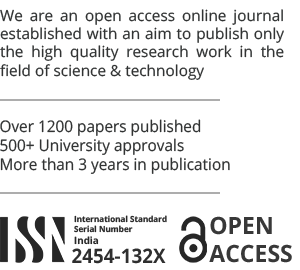Research Paper
Prediction of heart diseases using Machine Learning algorithms
Heart-related diseases or cardiovascular diseases are the main reason for huge number of deaths in the world over last few decades in the developed as well as underdeveloped and developing countries. Early detection of cardiac diseases and continuous supervision of clinicians can reduce the mortality rate. However, accurate detection of heart diseases in all cases and consultation of a patient for 24 hours by a doctor is not available since it requires more wisdom, time and expertise. Machine learning techniques help health care professionals in the diagnosis of heart disease. This aims a better understanding and application of machine learning in the medical domain, an automated system in medical diagnosis would enhance medical efficiency and reduce costs. In order to decrease the number of deaths by heart diseases there have to be a quick and efficient detection technique, the use of multiple machine learning algorithms for heart disease, models based on supervised learning algorithms such as: Decision tree, Naïve Bayes, K-Nearest Neighbors, Random Forest, Logistic Regression, and then implement them to predict heart disease based on patients’ medical records. Find the accuracy of the models, Choose the best output with the highest accuracy. These machine learning algorithms and techniques have been applied to various medical data sets. The implementation of work is done on heart disease data set from the University of California Irvine (UCI) machine learning repository, it contains several instances and attributes. By using the data set we test on different machine learning techniques and predict the best model which is computationally efficient as well as accurate for the prediction of heart disease.
Published by: N. Vineeth, V.N.V.L.S. Swathi, C. Vishal Sai, V. Vishal
Author: N. Vineeth
Paper ID: V6I2-1453
Paper Status: published
Published: April 25, 2020
Full Details

